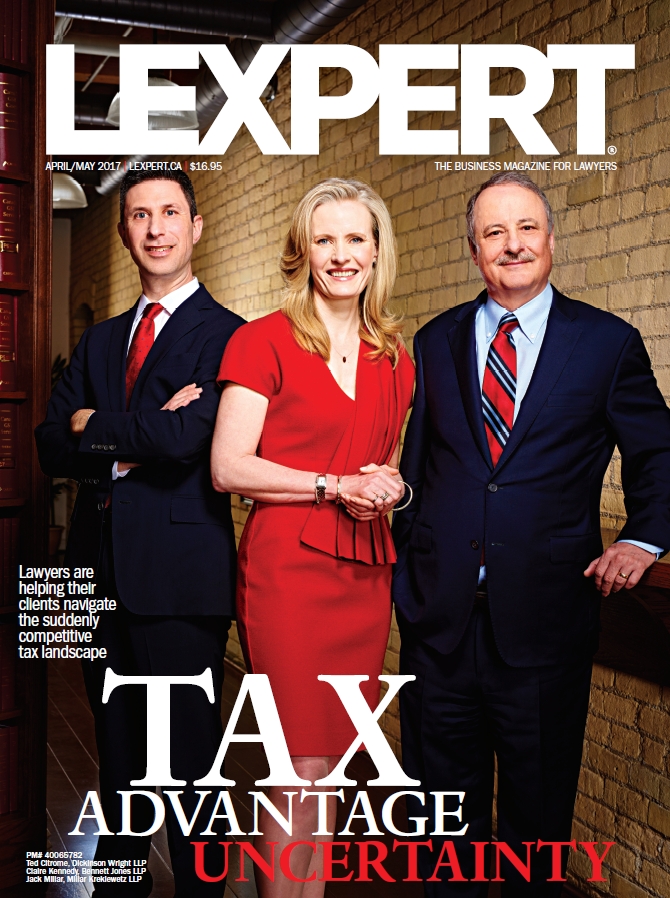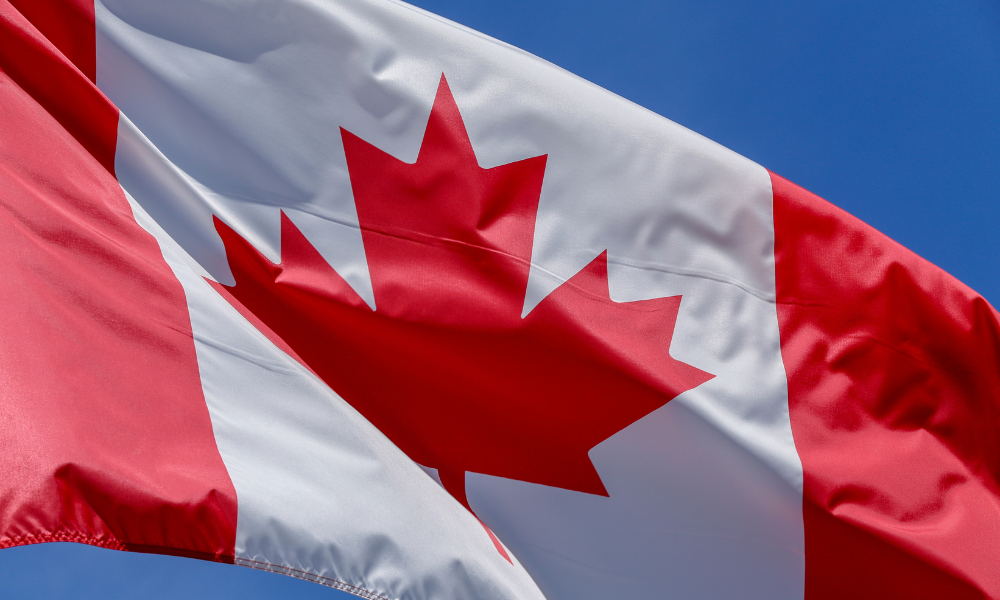There’s little doubt that heightened international tax competition would have enormous implications for this country — and, indeed, the games seem to have already begun. The United Kingdom’s corporate tax rate, which was 28 per cent in 2010, now stands at 19 per cent and is set to drop to 17 per cent by 2020.
In the United States, meanwhile, President Donald Trump was elected on promises that included lowering the equivalent tax rate there to about 20 per cent (a figure that includes state taxes) from its current 39 per cent. That number means that businesses in the United States are among the highest taxed in nations with advanced economies, apart from Japan. Not to be outdone, UK Prime Minister Theresa May then told the Confederation of British Industry that her “aim” was to maintain the UK’s status of having the lowest corporate tax rate in the G20 — implying that she was prepared to continue lowering tax rates if necessary to remain competitive.
“The UK has lowered taxes and we’re going to see tax reform of some kind in the US as well,” says Claire Kennedy, a tax partner in the Toronto office of Bennett Jones LLP. “Any cut in the corporate tax rate in the US, whatever form it takes, will be a challenge because we’re a small, open economy that is very close geographically to the US but has still managed to enjoy an economic advantage because of our lower corporate tax regime.”
It’s not, however, as if Canada, with its corporate rate averaging between 26 and 27 per cent (depending on the provincial portion), has the lowest corporate taxes in the world: a PwC report published in January puts the average for OECD countries at about 24 per cent. Still, the country has come a long way. “When NAFTA arrived in 1994, our average corporate tax rate was between 41 and 43 per cent,” says Jack Millar, a partner with Toronto tax boutique Millar Kreklewetz LLP. So much so that we currently enjoy an advantage of more than 10 percentage points over the US corporate tax rate. The United States also imposes tax on a corporation’s worldwide income, which means that repatriated profits from a foreign subsidiary are taxed again by the US, subject to some credits for the taxes paid overseas.
Read to learn more about what is the corporate tax rate for small businesses in Canada here.
Not only would a 15- or even 20-per-cent rate encourage companies everywhere to do more business in the United States, it could also encourage US companies — including Apple, Google and Microsoft — to repatriate a large chunk of the estimated US$3 trillion they have generated abroad. It would also put an end to the phenomenon that has seen American and other foreign companies combine to form holding companies in lower-tax jurisdictions, with the merging companies then becoming subsidiaries of the new parent.
In recent years, Canada has attracted a number of such transactions, including those arising from Texas-based Waste Connections’ merger with Progressive Waste Solutions; Tim Horton’s combination with Burger King; Valeant’s acquisition of Biovail; and others, particularly in the life-sciences industry. While Canada is not as attractive as other destinations such as Ireland or the Netherlands from a straight tax perspective, the prevailing conditions here, in terms of politics, economics, capital markets, currency valuation and interest rates, are business-positive and make acquisition financing favourable from a buyer’s perspective. Still, without the lure of Canada’s lower tax rate, these types of acquisitions may be less likely to continue making their way here. “If [President] Trump succeeds in pushing his tax proposals through, it will affect the entire matrix of decision-making for Canadian multinationals, including how to finance US operations and where to locate operations that generate profits,” says Drew Morier, a tax partner in Osler, Hoskin & Harcourt LLP’s office in Toronto.
But it’s not just the multinationals that should be concerned. “Canada’s mid-market is a major beneficiary of trade with the US,” says Vitaly Timokhov, a partner at TaxChambers LLP in Toronto. “Almost all of these businesses have US sales, especially those dealing in consumer goods and information technology.”
The simple reduction of the US corporate tax rate, however, cannot be viewed in isolation. In June 2016, Republicans in the House of Representative released a tax reform proposal that overlaps considerably with statements President Trump made during his campaign.
The proposed plan, which would convert the current system into a “destination-based cash flow tax,” would lower the tax rate to 20 per cent, but it goes further than a simple tax cut. Capital investments would be expensed rather than depreciated, businesses would not be liable for US tax on overseas earnings, companies could no longer deduct interest as an expense, and the tax would be “border-adjusted.”
According to Ted Citrome, a tax partner at Dickinson Wright LLP in Toronto, it’s the “border-adjusted” part that’s “the 800-pound gorilla in the room.” Historically, border-adjusted tax (BAT) is referred to in the context of a value-added tax (VAT), common in the European Union and in some 160 countries. Canada’s closest equivalent is the goods and services tax (GST). “VAT and GST use the same sort of mechanism as BAT by taxing imported goods and exempting exported goods from that tax,” Citrome explains.
But VAT and GST are consumption or sales taxes: they are ultimately paid by the end users in the taxing jurisdiction, regardless of whether the products are completely or partially imported. So Canadian residents pay the GST whether their car is Canadian, European, American or Japanese in origin. As a result, these cannot be seen as protectionist import taxes. Some countries, of course, choose not to impose VAT on their own exports, but that alone does not make VAT protectionist.
BAT, by contrast, is a business tax. The GOP plan would exempt exports from tax by not including them in a company’s income; at the same time, companies would not be able to deduct the expense of acquiring or producing imports from the income the imports generate. In this form, BAT is an import tax — and protectionist — because it treats exports differently from imports in the taxing jurisdiction.
Levying this form of BAT could mean that, using the automobile industry as an example, that a car produced in Canada and Japan would be more expensive for Americans to buy in the United States than the identical car produced in the US, for the simple reason that US dealers could not deduct the cost of acquiring these cars from their gross income. By contrast, where the car is produced in the US, dealers would be taxed less because they could deduct certain costs, most particularly wages, from their gross income.
When push comes to shove, then, in its proposed American incarnation, BAT, unlike VAT and GST is, in effect, a tariff. Bearing in mind that the United States is Canada’s largest trading partner to the tune of some $715 billion annually, the impact of BAT could be staggering.
Barclay’s economists have estimated that companies, including Canadian companies, that have their supply chains outside the US and export goods into the US would need profit margins of 20 per cent just to break even. It’s true that Canadian and other foreign companies that have more of their supply chains in the US and do a lot of exporting might find the proposed system more advantageous.But is BAT going to happen? It is impossible to predict. Congressional leaders are largely in favour, but President Trump appears to be leaning toward a BAT targeted at countries whose trade policies he finds offensive. Although he has called a universal BAT “too complicated,” he has at the same time acknowledged that it is up for discussion.
“As usual, we’re getting conflicting messages,” Citrome says. “But there are discernible trends and momentums about which Canadians should be concerned right now.” Still, Dalton Albrecht, a tax partner at EY Law LLP in Toronto believes there’s much less for Canada to worry about if it is in fact a targeted BAT that emerges. “If countries are exempted, Canada should be one of them because so far there’s no sign that [President] Trump thinks we’re a problem,” he says.
Ultimately, BAT’s legislative success may depend on whether or not President Trump and his Republican backers continue to believe and spread the dubious proposition that the VAT systems of foreign countries are behind the US trade deficit.
Jack Mintz, a prominent economist who is the President’s Fellow at the University of Calgary School of Public Policy, is but one of many commentators who have noted that, to the extent that the US is disadvantaged by VAT in other countries, the situation could be rectified through the imposition of its own consumption-based BAT.
The difficulty with that proposition, however, is that imposing a pure VAT on the existing US tax system without other reforms would amount to a tax hike — political suicide, to be sure, in the current political climate. “There’s a general lack of understanding everywhere of the complexities that are inherent in corporate tax systems,” Kennedy says.
The arguments against BAT are varied and numerous: even the Republican tax reform blueprint concedes that BAT might be a violation of international law. Prominent economists have testified and written that BAT will do nothing for the balance of trade because the US dollar would automatically appreciate, making exports from that country more expensive for foreign purchasers and imports cheaper. “The consensus view among economists seems to be that the new rules are unlikely to accomplish their protectionist objectives,” Citrome says.
Perhaps most tellingly, the US business world is split on BAT, a point underlined by the relative silence of the American Chamber of Commerce on the issue. “In some cases, the changes will be helpful to US companies and in other cases they will be damaging and possibly devastating,” Citrome says.
Companies in the United States that rely heavily on domestically produced exports are, of course, among BAT’s most strident supporters. But retailers and consumer-goods companies, which fear that currency adjustments will not offset BAT’s impact on the costs of the foreign goods they import, have formed a group called Americans for Affordable Products to lobby against BAT. Producers of oil and other commodities, which are priced in US dollars on global markets, are concerned that their output will become much more expensive. Businesses dependent on a large number of foreign customers, such as those in the education and tourism sectors might also suffer from a US dollar inflated by BAT’s implementation.
In his Financial Post column, Mintz predicts that the complexities may force the US to choose a different route to tax reform. “I suspect the Trump administration and Congressional Republicans will find themselves preferring a simpler way to spur economic growth: a sharply lower corporate income tax, accompanied by tighter rules to tax profits left abroad and fewer special carve-outs for favoured businesses,” Mintz writes.
What shouldn’t be ignored in the discussion about corporate tax reform, however, is the potential reduction in personal tax rates in the United States. If that happens, Canada’s combined federal-provincial marginal rate of 53 per cent — fourth highest in the OECD and already quite a bit higher than existing US rates — could, Mintz predicts, cause “a repeat of the same ‘brain drain’ we experienced in the 1990s.” If the US dollar rises in response to BAT, the flow of talent southward could become even more conspicuous.
Foreign investment in Canada could also suffer. Mintz and Phil Bazel, also of the University of Calgary’s School of Public Policy, modelled the impact of a 15-per-cent US federal tax rate on new investment (see graphic). The effective tax rate in the US would fall by one-third, from 34.6 per cent to 23.1 per cent. That’s still slightly higher than the Canadian rate of 20.1 per cent. “However,” writes Mintz, “in certain sectors, where Canadian policy discriminates against industries — namely, construction, utilities, transportation and retail trade — U.S. investments will be taxed at lower rates than Canadian investments.”
“I think we’re going to see an import duty framed in terms of some kind of border adjustment rather than a tariff,” says Peter Kirby, a partner in Fasken Martineau Dumoulin LLP’s Montréal office.
In other words, call it what you want — BAT, modified BAT, tariff or whatever — the upshot will be that the United States will reduce corporate taxes and Canada will have to compete on a brand new playing field. And if history is any indication, that could mean the equivalent of building a new stadium here as well: when the Reagan administration brought in reforms in 1986 that lowered personal and corporate rates in the US, Canada’s federal and provincial governments had no choice but to respond to the competitive pressure with reforms of their own.
Kennedy suggests, however, that the Liberal government is unlikely to reduce the federal portion of the corporate tax rate, which currently stands at 15 per cent. “The feds don’t have much room to manoeuvre, especially because they’re already facing big budget deficits, and giving corporations any more breaks would be politically unpopular,” she says. In Kennedy’s view, the real problem lies with the 10- to 14-per-cent add-on to the federal rate that comes from provincial corporate taxes. Whether the provinces have much more room to manoeuvre than the federal government, however, is debatable.
What manoeuvrability Canada may have could appear in the form of targeted tax breaks or their equivalents. “We could, for example, see changes to the small business taxation rate, where benefits increasingly go to young businesses with growth potential instead of small, static operations,” Kennedy says. “We might also be looking at more targeted R&D incentives aimed at improving Canada’s attractiveness as a destination for technology-based companies, especially start-ups.”
Also swirling around had been talk that the federal government planned to increase the capital-gains tax-inclusion rate — the portion of a capital gain that is added to reportable income — from 50 to 66 per cent. That, of course, wouldn’t have sat well with everyone, and particularly not for well-heeled securities investors.
While the federal budget, released in March, did much to alleviate those concerns, taxpayers will remain acutely sensitive to any policy redirect from the Prime Minister or Finance Minister Bill Morneau. “The reduction of the inclusion rate from 75 per cent to 50 per cent is one of the best things that ever happened to Canada’s economy and the growth of wealth in this country,” Tikhonov says. “Any increase in the capital gains inclusion rate will have a major impact on many of my mid-market clients and it would definitely affect the transfer of wealth because the baby boomers aren’t getting any younger.”
Another area that could be impacted by US tax reform is transfer pricing. “Multinationals are always trying to structure intra-company transactions so that the expenses accrue in the country that has the higher tax rate,” Morier says. “If it turns out that we have a higher corporate tax than the US does going forward, we might see Canadian multinationals pushing more production to Canada.”
Then there’s the prospect that Canada will respond in some other way if it regards any new US tax as tantamount to a tariff on cross-border trade. On her first visit to Washington in February, Foreign Affairs Minister Chrystia Freeland told US politicians that Canada would respond in kind to any measures that amounted to a tariff against Canadian goods.
“If such an idea were ever to come into being, Canada would respond appropriately," she told reporters on a conference call at the time. Still, about the only thing that’s certain is that much remains uncertain, including the fact that Congress, despite repeated attempts, has been unable to come to a consensus on meaningful tax reform for at least 30 years.
Needless to say, opinionists and tax lawyers will be paying close attention. In the case of the latter, they will continue to serve their clients in adaptive ways that reflect new government measures. For companies with operations in both countries, or indeed customers in both countries, the future sounds challenging.
Julius Melnitzer is a freelance legal-affairs writer in Toronto.





